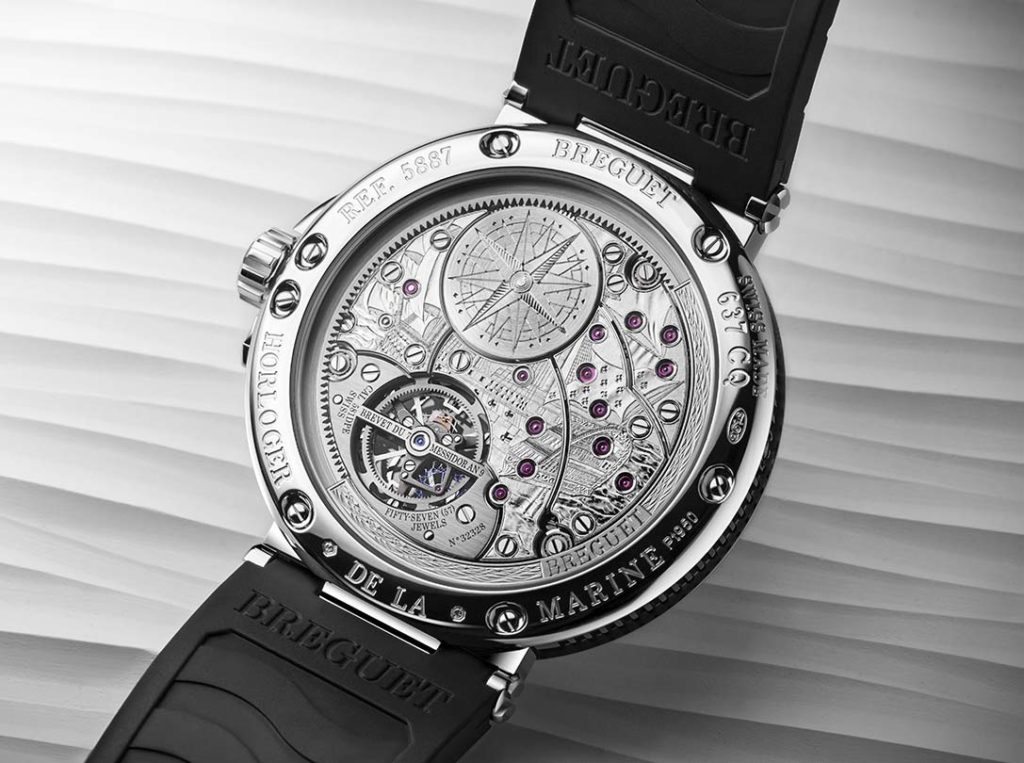TIME ADJUSTMENT
The Manufacture has chosen platinum, the “metal of kings”, to adorn its emblematic watch, which, in addition to the ballet of a tourbillon, displays both regular and solar time, as well as a perpetual calendar.
True to his pioneering spirit, Abraham-Louis Breguet (1747-1823) introduced platinum, then unknown in watchmaking, into the manufacture of his watches, first in 1780 for the oscillating weight, then for the case around a quarter century later. The metal, praised as much for its luminous gray hue as for its resistance to corrosion and scratches, continues its adventure within the Breguet collections, now adorning the emblematic Marine Equation Marchante 5887.
This timepiece symbolizes the technical power of the brand by combining several complications accompanied by the ballet of a tourbillon: the équation marchante and the perpetual calendar. The former simultaneously displays on the dark dial, decorated with a guilloché “waves” pattern, the difference between civil time (used in everyday life) and solar time (which is irregular) by means of two central hands, one with a hollowed-out knob and the other finished with a gold ring. The second acts like a mechanical diary, revealing the date (anchor-shaped arrow hand), day, month and leap years (apertures at 10:30 and 1:30). The complex regulator, meanwhile, dances freely in an opening at 5 o’clock. The self-winding 581 DPE caliber, whose peripheral weight is also in platinum, brings this array of functions to life, while providing a substantial 80-hour power reserve. It is housed in a case with a delicately fluted case middle measuring 43.9mm in diameter and 11.8mm thin.




